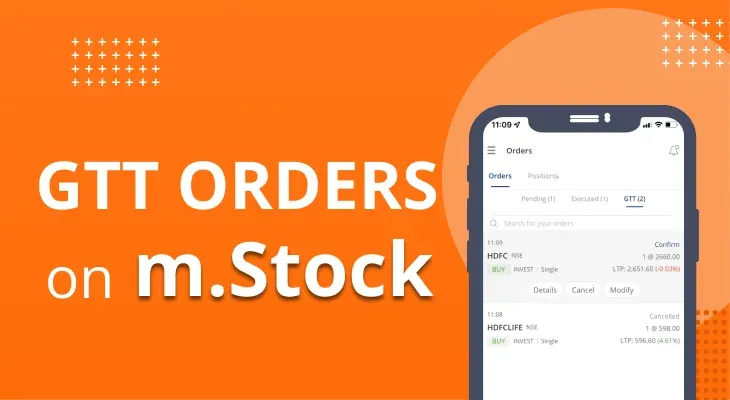
Is a Margin Pledge Necessary?
To invest in the stock market, you need adequate capital. But what if the funds you have in your trading account are inadequate to purchase the stock of your preferred company? Here’s where Margin Trading Facility (MTF) comes into the picture. It is a unique feature that many stockbrokers offer. It allows you to purchase stocks even when your trading account has insufficient funds.
With MTF, all you need to do is deposit a percentage of the trade value. The remaining amount will be funded by your stockbroker. In exchange for providing this funding, the stockbroker creates a margin pledge on the stocks that you purchase. Here’s a comprehensive overview of what a margin pledge is, its importance and the various benefits that it offers.
What is Margin Pledge?
A margin pledge is created when your stockbroker pledges the securities in your demat account as collateral for the funds that you borrow from them. The borrowed funds can then be used to purchase more securities via a stock exchange.
Depending on the stockbroker, the process of pledge creation may vary. For instance, some stockbrokers require you to manually confirm the margin pledge request, whereas others don’t require any such confirmation.
Even though the securities are pledged, they continue to remain in your demat account and cannot be sold by you until the pledge is eventually withdrawn. Margin pledges are withdrawn only once you repay the borrowed amount along with the necessary interest.
Why is Margin Pledge Necessary?
According to the rules and regulations of the Securities and Exchange Board of India (SEBI), a margin pledge is necessary to be able to use the Margin Trading Facility (MTF) offered by stockbrokers.
In addition to being a legal requirement, a margin pledge also protects the stockbroker from any defaults in the repayment of the borrowed amount. In the case of any default in repayment, the broker can simply liquidate the pledged securities to recover the dues.
How Does Margin Pledge Work?
Now that you know what is margin pledge, let’s look at the process and understand how it works.
To initiate the margin pledge process, you or someone with Power of Attorney must provide instructions to the broker to create a margin pledge. This can either be done physically or electronically through SPEED-e.
The stock broker will then verify the pledged securities and update their records accordingly. Stock brokers can accept collaterals in the form of securities only through margin pledges created on securities held in a client’s demat account.
These margin pledges are then established towards a Specialized Demat Account of the stockbroker, which can be opened as either a Client Securities Margin Pledge Account (TM) or a Client Securities Margin Pledge Account (TM/CM).
Points to Keep in Mind for Margin Pledge Creation
Waiting for Confirmation
When a margin pledge instruction has been made, it waits for verification from the pledgee (the entity receiving collateral). If the party has opted for automatic verification, then the pledge is activated instantly.
Approved Stocks
You should only create a margin pledge on approved securities by your stockbroker to use as collateral.
Quantity and Value
Create a margin pledge based on the number of securities, their respective amounts and relevant haircuts (percentage decrease in value due to risk).
Restrictions on Securities
Once the margin pledge has been constituted, you may not transfer, keep, lend against or otherwise deal with them except upon release or invocation of the same.
How to Withdraw Margin Pledge?
Once the entire borrowed amount along with interest and other charges are fully repaid, the margin pledge is automatically and unilaterally removed by the stockbroker by providing an instruction to the respective depository.
That said, as an investor, you can initiate the margin pledge withdrawal as well. All you need to do is log into the SPEED-e portal (if you have an NSDL demat account) or the Easiest portal (if you have a CDSL demat account) and submit a request for pledge withdrawal on your securities. Once you place such a request, the depository will notify your stockbroker who has to then approve the request. After receiving the approval from your stockbroker, the depository will close the margin pledge created on the securities in your demat account.
Benefits of Margin Pledge
Margin pledge offers a host of advantages for both the investor and the stockbroker. Here’s a quick overview of some of the most important benefits.
Enhances Your Purchasing Power
Borrowing funds by pledging the stocks in your demat account lets you purchase securities even when your trading account lacks sufficient funds to complete the transaction.
Can be Completed Electronically
One of the major advantages of margin pledges is that the pledge creation can be completed electronically. All you need to do is approve the margin pledge request from your stockbroker by entering a One-Time Password (OTP) that you receive on your registered mobile number and email ID.
Easiest Way to Get Access to Funds
With a margin pledge, you can quickly and easily get access to funds. You don’t have to submit any extensive documentation or wait for days for approvals.
Acts as a Security Against Default
Margin pledge provides a level of protection to the stockbroker against default in the repayment of the borrowed money. In the case of any such default, the stockbroker can simply invoke the pledge created on the securities by sending a request to the depository. Invoking the pledge will lead to the securities being transferred to the stockbroker’s demat account. The broker can then sell the securities in the secondary market to recover the dues.
Conclusion
With this, you must now be aware of what a margin pledge request is and why it is necessary. That said, although pledging securities is a good way to gain access to funds for trading, it is important to be cautious. Always remember to repay your dues to your stockbroker in time. Failing to do so can lead to losing your pledged securities.
If you’re interested in using Margin Trading Facility (MTF) but are worried about high interest rates, m.Stock may be able to help. With m.Stock’s Pay Later (MTF), you get industry-best interest rates starting from just 6.99% per annum. That’s not all. You also get other benefits like unlimited holding periods, up to 80% funding and low pledge creation charges.
FAQ
Is it good to pledge shares for margin?
Sometimes it can be advantageous to pledge shares as collateral for margin. This allows secure borrowing against stocks at lower rates than unsecured borrowing would attract. No tax liability arises from share pledging either.
Furthermore, you can retain ownership over such shares and be entitled to dividends while benefiting from any increase in their prices. However, this does not come without risks. There might be a need for additional funds if their price drops. This could lead to forced selling of shares as well.
What are the charges for margin pledge?
There is no charge when you pledge your shares to secure funding under Margin Pledge with m.Stock. However, when the shares are unpledged, you will be charged ₹32 per PSN.
Can I withdraw the pledge money?
When you pledge your shares, you receive a margin, not cash. Therefore, this amount reflected as a margin in your trading account cannot be withdrawn as cash. Nonetheless, you can utilise this margin to purchase securities at low-interest rates.


